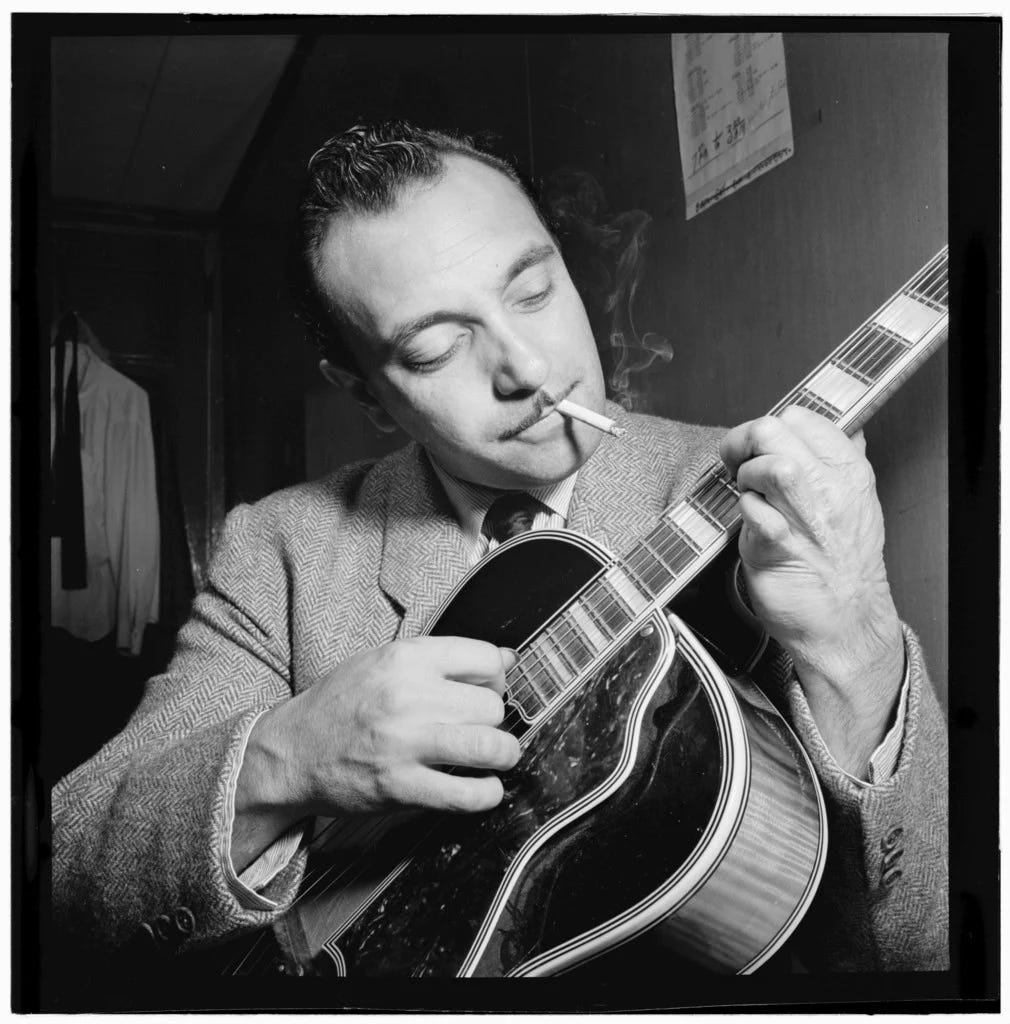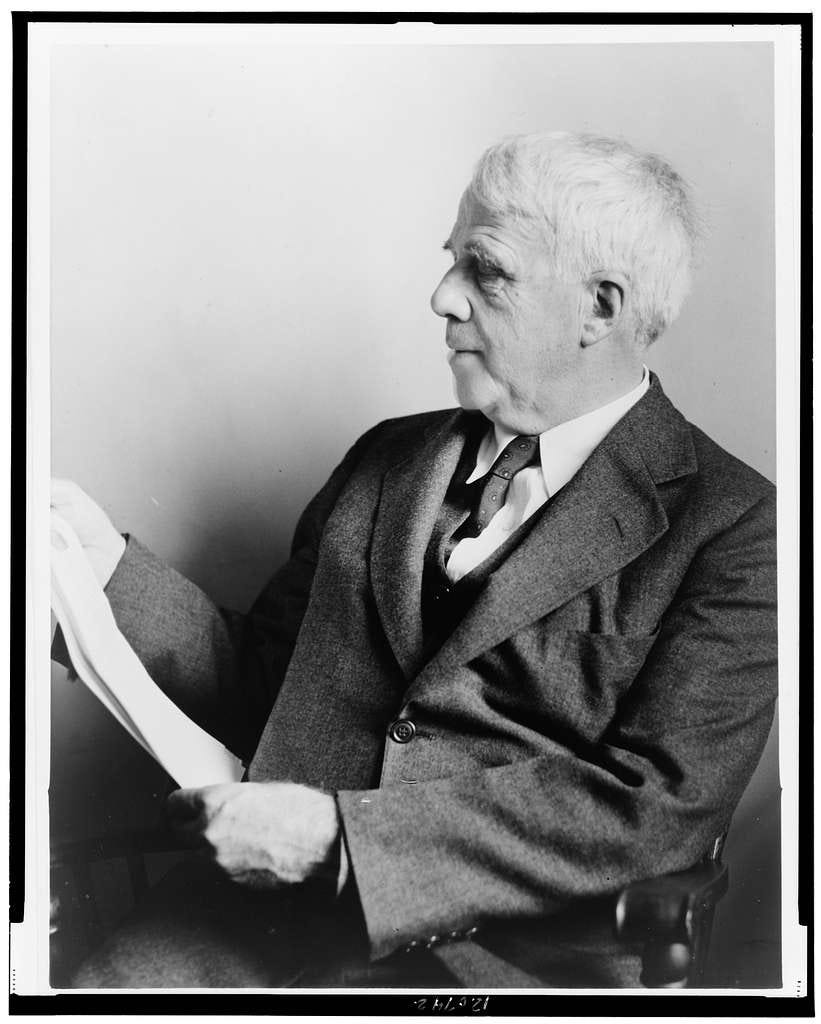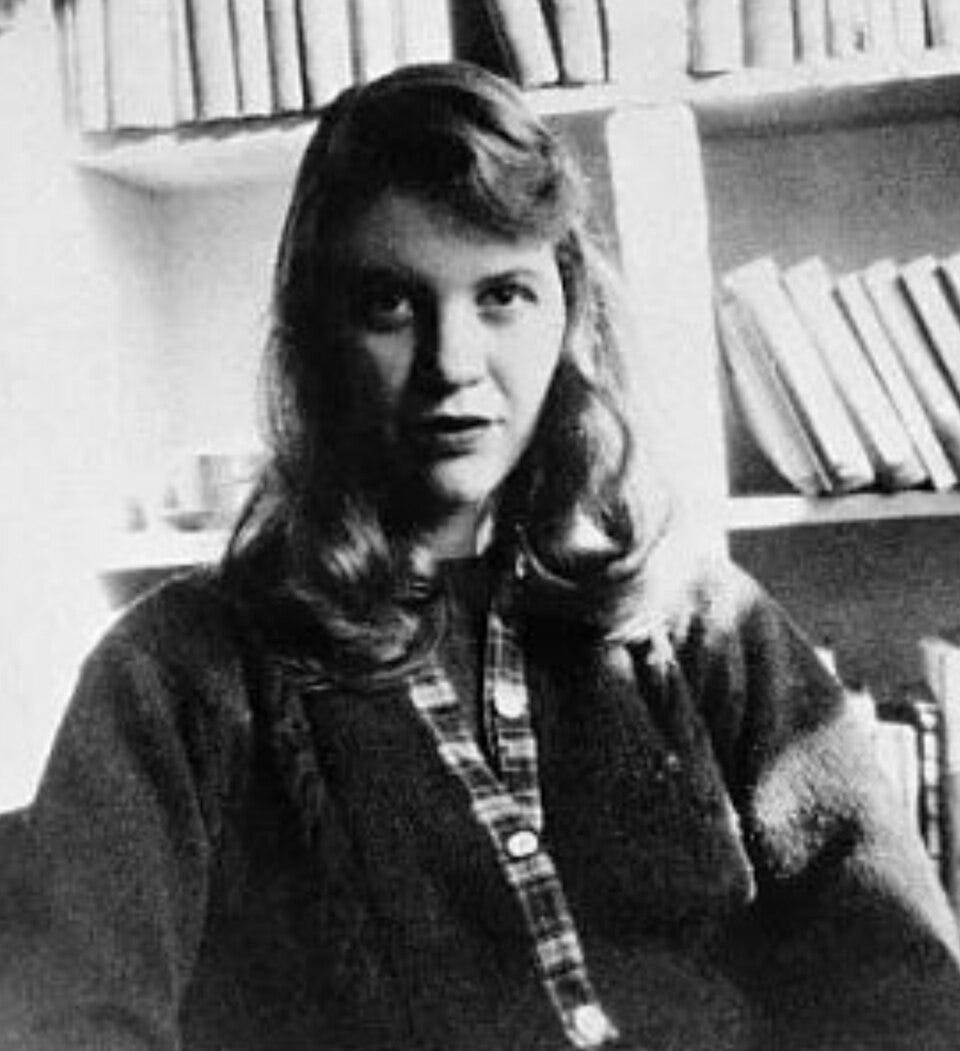When two fingers are better than four
A theme and variations on creative constraints, via Django Reinhardt
Imagine your childhood friend is a swimming prodigy. As a youth, he dominates in local competitions. When he goes to regionals, he crushes the other swimmers. By the end of high school, he has established himself as one of the best swimmers in the state.
Unfortunately, during your senior year, he gets in a terrible accident, rendering his arm paralyzed. It’s a horrible misfortune by any standard, but it’s all the more tragic because of his athletic promise. You know he’ll be all right—his impressive work ethic should take him far in whatever pursuits he chooses—but of course, you know he’ll never swim again.
But then, surprise! As soon as he’s recovered, he’s back in the pool.
“What an indomitable heart!” you say, “but it must kill him to have only a fraction of his former ability.”
Then you hear that he just…won a race? You ask around and find out that he has developed a completely new one-armed stroke, the likes of which no one has ever seen. You go see him in action, and sure enough, he’s beating two-armed swimmers with one arm quite literally tied behind his back.
He wins regionals again. Then state. Then nationals. Next thing you know, he’s in the Olympics. And he brings home a gold medal. It’s a sensation: in fact, people with two arms have started copying his one-armed technique.
It sounds impossible, of course. But you change a few details, this is the story of Django Reinhardt.
Django’s gift wasn’t swimming—it was music, specifically the guitar. A Belgian Sinti gypsy, Django was a prodigy who at the age of eighteen burned his fretting hand in a caravan fire. This left him with the use of only his index and middle fingers (along with his thumb).
Undeterred by this accident, he invented a completely novel approach to getting around the guitar. His technique, which would seem impossibly limiting to any regular guitarist, actually proved to be both incredibly elegant, and even open up novel musical possibilities.
Django is widely considered to be one of the greatest and most innovative guitarists of all time. He takes the number 1 spot on insider sites like Best of Jazz and Learn Jazz Standards, he’s voted number 2 on the open-voting site Ranker, and he even gets a top-100 place on Rolling Stone’s all-time guitarist list, which virtually exclusively considers rock guitarists. He’s simply that undeniable. He has spawned an entire genre and countless imitators.
Plus, his music is incredibly beautiful. I invite you to listen for yourself.
There exists only one video of Django demonstrating his technique. (This is either extremely tragic or extremely lucky, depending on which half of the glass you’re looking at.) I’ve linked it at the bottom of this essay. But if you want to see another example of what his technique looks like, here’s me playing one of his solos using his fingerings.
What’s so interesting about the two-fingered technique is that there are lots of things that you just cannot play that way. But Django never seems to need to play any of those things. His unique “vocabulary”—a jazz term that means for musical ideas exactly what it means for spoken ones—comprises exclusively phrases that make sense to play bi-digitally. Anything that doesn’t work that way, he just…doesn’t play. And you’d never, ever know just by listening to him that he has such a limitation.
It’s a funny thing that constraints seem to breed, rather than hamper, creativity.
When I was young and obsessed with composing classical music, I spent my free time studying various classical forms: Rondos, Theme and Variations, Fugues. My favorite was the Sonata, which I loved so much that it became the basis of my first email address. Sonata form provides an overarching structure—Exposition, Development, Recapitulation—and hitting these beats gave my compositions purpose, instead of feeling like I was musically meandering.
If you think that following a form like this would get old, consider that for the last six decades or so, the popular music we all listen to overwhelmingly obeys strict formal constraints. These include a roughly three-minute duration, being in 4/4 time with a backbeat, and comprising sung verses, choruses, and bridges. Popular song form may seem like “just how music is,” but it’s actually an extremely specialized format, and one we don’t seem to get tired of.
I also find that my writing flourishes with constraints. In fiction, writers often follow the hero’s journey or the three-act structure. Essays and blog posts like this one have their own set of guiding norms. But constraints in writing may be the most visible in poetry, where there are highly specialized forms like sonnets and haiku. Robert Frost is attributed with saying that writing free verse poetry is like playing tennis without a net.
Constraints like rhyme scheme or meter pose challenges that force you out of typical habits or ways of thinking. Sometimes, this extra effort leads to innovation that is better than whatever your unconstrained self might have come up with.
Shakespeare wrote in iambic pentameter—have you ever tried it? I will, right now:
The extra thinking that I have to do
Propels me past the laziness inside
Of me, which would prefer the default path
Which I have walked a thousand times before—
And rarely leads me to a novel thought.
But when you read the Bard, you’d never know that he was writing verse with such constraint. And that’s precisely what it’s like to hear a solo played with Django’s new technique. In fact, it’s these invisible constraints that led to such a novel, special sound. It’s interesting to wonder if he’d be the legend that he is without that fire—would we have even heard of him if he had never had to pave a different path?
By the way, that whole paragraph is also in iambic pentameter. Could you tell? Or was that constraint invisible?
It’s fascinating to me that constraints seem to be able to hide themselves so well inside of art. My theory for this is that creativity is arguably just as much—or possibly more—about what you omit than what you include. In any moment of creation, to choose one thing is to leave out a virtually infinite pool of other options. In this way, making strong choices can be overwhelming. Constraints, then, might help by significantly narrowing that initial pool of possibilities. And making choices based on constraints doesn’t show because—well, who can keep track of everything you’re leaving out in the first place?
As in music and writing, so too perhaps in life. Sylvia Plath’s fig tree was introduced to me here, on Substack. (It’s quite the hot topic around these parts, it seems.) In that little parable, she sees a tree full of figs representing different life possibilities—being a writer, a family woman, a bohemian, etc. Unable to decide on one in time, they shrivel and fall at her feet.
People with lots of interests and talents, rather than single-minded passion, probably feel this fable even more acutely. I’d describe myself this way. I’ve always been something of an expert amateur—I love learning deeply about something that sparks my interest, only to find myself soon drawn away towards something novel.
I ran a marathon, then basically never ran again. I played over 30,000 games of bullet chess before closing that chapter as well. I was obsessed with classical piano as a kid, but then I majored in English, then went to law school, then left the law to be a full-time parent, then started a Masters in Music Production on the side. I started a YouTube channel, a pop group, a video game production studio…I could go on. I’m basically a professional fig taster.
I used to rue this about myself. It’s an obstacle to a certain kind of success that comes when you are more focused. And I definitely do worry about the figs all shriveling up. But I’ve gotten more comfortable with it as part of my identity and what makes my life enjoyable. For instance, I have no plans to narrow my writing or The Fare Well Files into an easy, elevator-pitchable brand. I’ll write about parenting, and AI, and creativity, and law, and faith, and culture, and whatever the heck else I’m interested in, and everybody can just deal with it. It feels great. If it slows down my growth, so be it.
But the truth is, I am working under some constraints. Each week, I set out to write an Essay, which certainly has formal rules, some explicit, some implicit. I adore this form, and I am more or less singularly focused on it in my writing right now.
Likewise, while my musical interests and abilities are all over the map, I have launched a project that is as highly constrained as anything creative I’ve ever done: Jordan Michael Call, my gypsy jazz persona. My plan is to release a new single in the gypsy jazz style each month, culminating in an album, then to repeat that process until I can’t bear to anymore.
Gypsy jazz is an extremely niche style with a lot of norms and rules. I used to resist it, because “I Contain Multitudes,” but as I’ve leaned into it, I’ve really enjoyed it. I made a page for myself on Instagram and Spotify and did some very focused brand work and I’m really pleased at how it’s all turning out. It was surprisingly fulfilling. I don’t want it to be all I do (it’s my second creative priority after The Fare Well Files), but I’m finding myself falling in love with the constraints.
Sometimes we opt into constraints. Django didn’t. That was chosen for him. And yet, his unquenchable musical curiosity was able to take what should have been a disability and leverage to create uniquely personal art that still resonates a hundred years later. If instead of some fingers, he had lost both hands, he probably would have invented an instrument to play with his feet.
I don’t know what the constraints are on your creativity in your life. For me, I have to find a way to express the things in my heart on the margins of caring for three little children, after a circuitous life path and unfocused creative journey that sometimes seems like it has culminated in very little.
But whatever your constraints, Django showed us that that’s not what it’s about. In the end, it doesn’t matter much how many fingers you have. What really matters is: do you have a song you feel you need to sing?
If so, take heart; creativity always finds a way.
I would love for you to follow along with my gypsy jazz project if you’re interested. The music streams on all platforms, but here’s my Spotify page:
And here’s my Instagram page, where I post more casual solos and videos: https://www.instagram.com/jordanmichaelcall/








I was reading this and finding it very relatable, I have certainly watched many figs rot away in my life. And I struggle with constraints and scope when starting projects. It was only halfway through that I realized it relates to my life in a way that is much more direct, it was such a clear connection I felt shocked that i hadn’t noticed immediately. My 4 year old daughter loves music and has hemeparetic cerebral palsy, which means her left hand does not work well. I have often wondered what learning an instrument would be like for her when she’s older. It’s nice to be reminded that constraints aren’t just something to overcome, they can be a genuine blessing and create the conditions for success
I have zero artistic talent, but definitely felt some resonance in the struggle of picking which next thing I will focus on--perhaps to the detriment of things I've already become quite good at that are also fulfilling. Thanks for your thoughts!